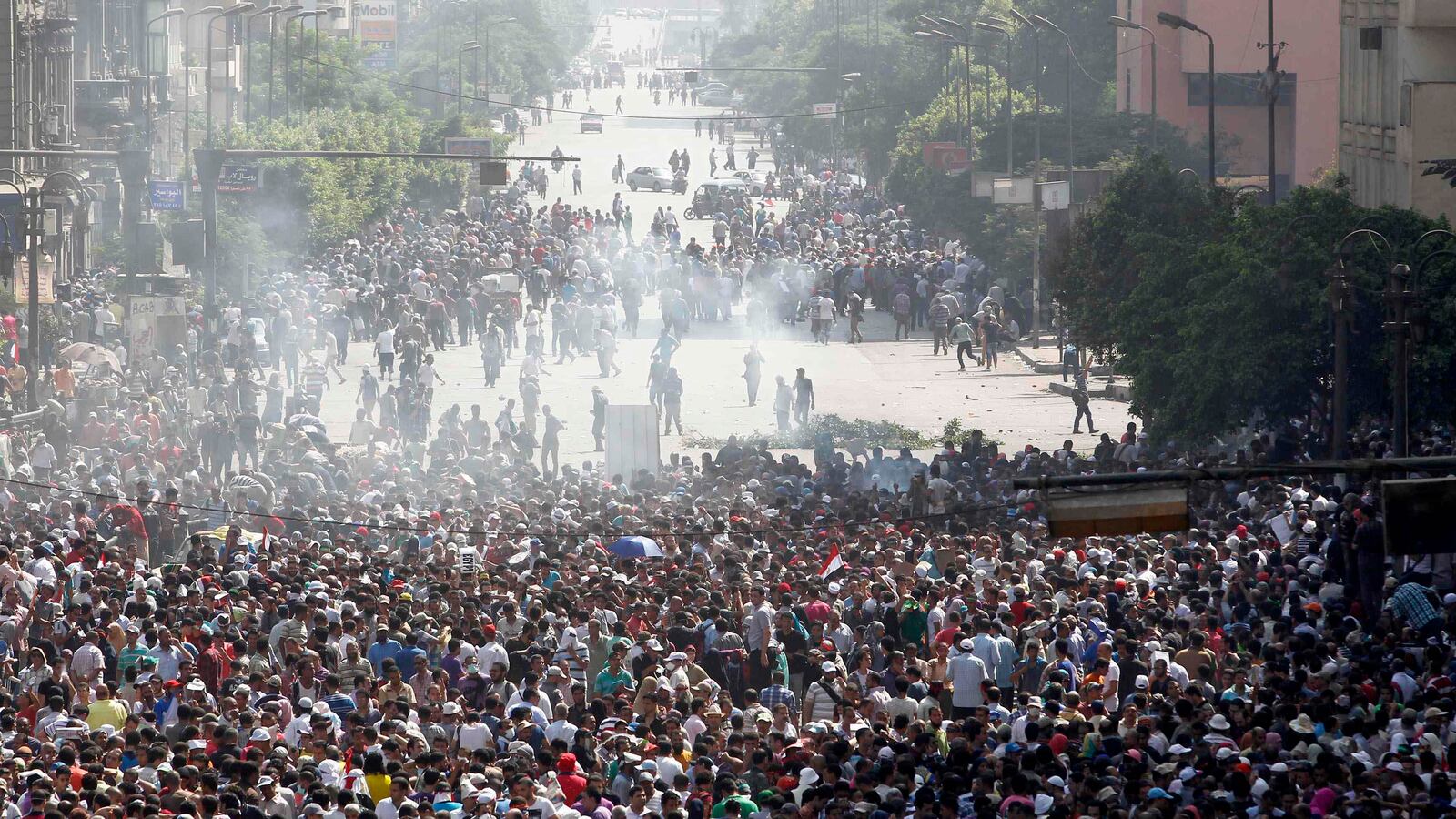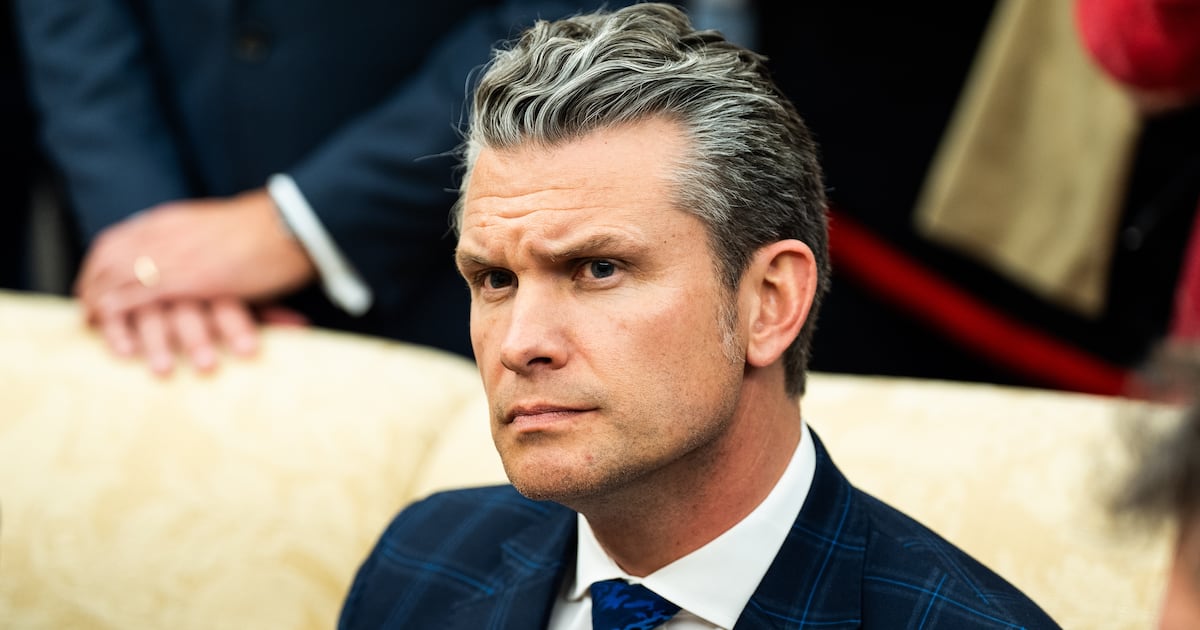On Friday morning, Cairo’s streets were empty. No bustling cafés or beeping taxis. Eerie silence enveloped the city, only to be shattered by an orchestra of rapid gunfire and protest chants following noon prayer.

Most families stayed inside, terrified of what the planned “Friday of Rage” would bring. Groups of men holding sticks and bats formed “popular committees” and manned civilian checkpoints around the city, demanding drivers open their trunks to be searched. Teenage boys wandered around some neighborhoods, taking full advantage of the lax security to harass women they came across.
After Friday prayer sounded, thousands of supporters of deposed President Morsi took to the streets to protest the killing of Islamist demonstrators by security forces on Wednesday and Thursday in a brutal government crackdown. At least 600 people have so far been killed in the clashes.
Marchers met at mosques around the city and walked to Ramses Square in downtown Cairo where some two-dozen protests were scheduled to converge. And moments after the call to prayer, several hundred demonstrators poured onto the May 15 Bridge that spans the Nile and clashes raged all day on the bridge.
A small group of locals—mostly teenage boys—tried to block the bridge that leads into downtown Cairo from Zamalek, an upscale island neighborhood in Cairo. Pro-Muslim protesters chased them away, pelting them with rocks. Gunfire pierced the air as the boys ran for their lives.
Several hours later, the boys reemerged, holding rocks themselves, in another attempt to stop the surging march from crossing the bridge. This time, a lone pro-Morsi protester crouched, aimed, and fired multiple rounds at the unarmed teenagers. Hundreds of protesters rallied behind the gunman, in a V formation. (While this protester was armed and shot to kill, many pro-Morsi demonstrators across Cairo did not have weapons.)
An elderly Islamist man with a cane hobbled along the bridge, attempting to keep up with the much younger protesters around him. The man next to him held a large piece of cardboard above his head, shielding his face from the baking sun. Women in niqabs—hugely outnumbered by male protesters—held onto each other, shouting ‘Islammeyya! Islammeyya!’
Protesters lit fire to a car, the black smoke billowing into the air. Flames leapt at the apartment building above. On the other side of the bridge, security guards—many unarmed—paced anxiously outside apartment buildings that they have been hired to protect.
In Giza, southwest of central Cairo, Amin Abu Hashem, a young man who just graduated from university, stepped out of his apartment to grab something from his car and got shot at by a protester. In Katameya Heights in New Cairo, residents reported a drive-by shooting that killed at least one policeman.
In Ramses Square, where the pro-Morsi marches were supposed to end, blood soaked the streets. The Interior Ministry called on citizens to clear Ramses Square to quell what they said were “terrorist” elements.
People on motorbikes carried injured protesters to a nearby mosque, which had been turned into a makeshift hospital. Victims said snipers had fired at them when they were peacefully protesting.
Gunshots still rang out at Ramses Square as night fell and the streets cleared for the 7 p.m. curfew imposed by the government. One street on the anti-Morsi side looked like a war zone, as young men in plainclothes lobbed Molotov cocktails through the smoke-filled air. “Where’s the nearest hospital?” one man asked as he passed.
When a crowd pulled a bearded man from the chaos, there was a surge of anger and jeers. “Killers! They are killers,” someone shouted, and the bearded man was dragged off down the street. What happened to him was unclear.
Others limped back from the front lines, hit by shotgun pellets. One young man by the name of Tawfiq, said he had been facing down Islamists armed with “shotguns, guns, and automatic weapons,” though the government’s security forces were clearly better armed than the protesters.
Tawfiq said he was there to fight the Islamists but that he wasn’t affiliated with the security forces or the government. “I’m with the country. I’m with Egypt,” said Tawfiq.
As curfew loomed, a man in gym shorts and running shoes stubbornly defied the danger and put his headphones on, ready for a run. After a burst of gunfire, two boys on a moped whizzed passed, saying ‘Pew! Pew!’ laughing and imitating the sounds of the bullets.
As night fell, stragglers wandered through the uneasy quiet, while a few cars left on the roads searched for ways around the myriad roadblocks. Tahrir Square, often Cairo’s pulsing heart in times like this, was cordoned off by barbed wire and tanks, leaving residents who missed the deadline to plead with army officers to let them pass.
“It’s not safe here,” one Zamalek resident simply said as he rushed home.
With dozens more dead today, and hundreds laid to rest already, pro-Morsi protesters vow to continue rallying against a government they say is a brutal, military regime.
With Mike Giglio in Cairo.





